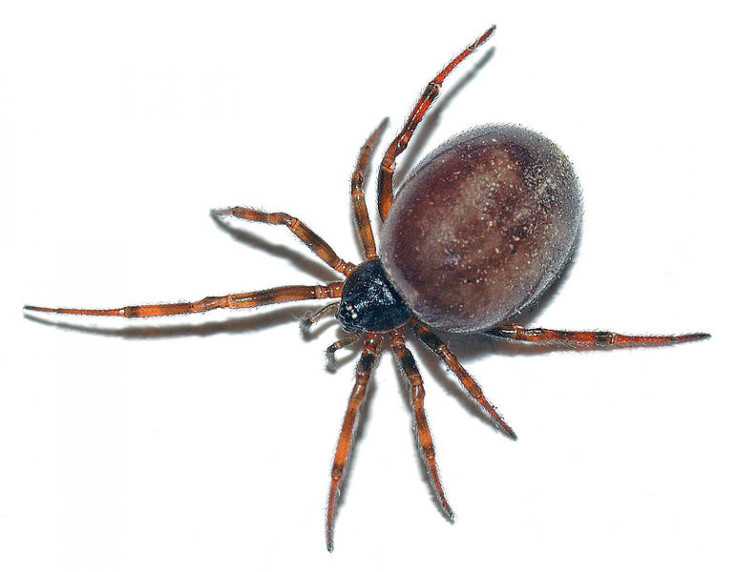False Widow Spider, Britain’s Most Venomous Arachnid, May Have False Reputation

The false widow spider, or Steatoda nobilis, has a reputation for being a nasty little crawler with a painful bite and a proclivity for chomping into humans. The Mail Online published the photograph of the guy who almost lost his leg after he was bitten by one of these spiders, while BBC News reported on the soccer player who was benched after requiring surgery following a false widow spider attack.
And headlines such “10 million killer spiders spreading across Britain” and “Mum’s terror as fifty venomous False Widow spiders race towards her” certainly give the impression that the false widow spider is getting ready for an all-out bloodbath in the U.K.
However, LiveScience has maintained the false widow spider’s nefarious reputation is more fiction than fact. Indeed, the black widow spider -- from which the false widow spider gets its name because of its resemblance to the infamous red-bellied arachnid -- has a much more venomous bite than the false widow. But even the black widow spider’s venom, reportedly 15 times stronger than a rattlesnake’s, hardly causes death or even serious injury. According to National Geographic, most people who are bitten by a black widow spider suffer no serious damage.
“There’s almost no evidence of Steatoda nobilis or any other UK spider causing anything more than temporary discomfort to anyone,” Matthew Chatfield wrote on the U.K. conservation website Naturenet. “What is clear, however, is that there are a good many people terrified of spiders, and this sort of alarmist populism serves only to reinforce this terror without any benefit to them.” He added that the worst that usually happens to someone bitten by one of these spiders is an uncomfortable, itchy lump.
According to the U.K. Natural History Museum, only 12 of the 640 species of spider in the U.K. are known to bite humans. And the likelihood of being bit by a false widow spider is extremely low, the museum said.
False widow spiders are not indigenous to the U.K. and came to the country from the Canary Islands, probably as hitchhikers on a crate of bananas, as noted by AOL Travel UK. The species was first reported in the U.K. during the 1870s. The spider has a bulbous, brown abdomen with cream-colored marks on it, often described as looking like a skull -- which, we’ll admit, doesn’t help its reputation as a natural-born killer.
Then again, stories about horrible encounters with false widow spiders aren’t made up -- they’re just not the norm.
“Some people can have bad reactions just like they do with wasp or bee stings,” Greg Hitchcock, a spider expert and British Arachnological Society member, told the Mirror Online. “The risk of being bitten is very, very small. The reaction has been a bit hysterical.”
© Copyright IBTimes 2025. All rights reserved.






















